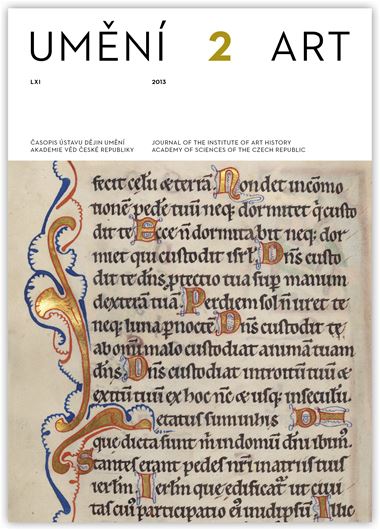Simonetta Prosperi Valenti Rodinò
Seventeenth-Century Italian Drawings in Prague: Pietro Testa, Valentin Lefèvre, Giovanni Maria Morandi, Giuseppe Passeri
The international community of drawing scholars is well acquainted with the wealth of quality Italian sixteenth- and early seventeenth-century drawings contained in the collections of Czech museums, galleries, and libraries through the publications of Czech researchers. Additional findings and attributions, however, can be drawn from a close study of the drawings from the seventeenth century, which is the subject of this article. It focuses on several remarkable pieces of work from the vast and diverse collection of art that belonged to the poet and writer Jiří Karásek of Lvovice (1871–1951), which is now in the Museum of Czech Literature in Prague. A drawing by Pietro Testa, originally titled Old man with his right arm stretched out before him, has now been successfully identified as a study of the God the Father for the painting The Prophecy of Basilides (in the Museo di Capodimonte in Naples) and has been dated as originating around the year 1648. A second drawing, The Sacrifice of Iphigenia, presents a scene whose arrangement of figures is similar to an engraving by Testa on the same subject, but the style of the work is different: this is a sketch for the seventeenth-century painting The Sacrifice of Iphigenia by the Flemish painter Valentin Lefèvre, who worked in Venice. Giovanni Maria Morandi is represented in Karásek’s collection by a seventeenth-century study titled Mary at the Tomb, a preparatory study for the painting Three Marys at the Tomb (Palazzo Chigi, Ariccia). A stylistic analysis of a small sketch titled Holy Family or The Virgin and Child with a Saint reveals it to be the work of the late seventeenth-century artist from Rome Giuseppi Passeri. Attribution of the drawing Susanna and the Stoning of the Elders, which in the eighteenth century was in the collection of a banker named Pierre Crozat, has yet to be resolved: its style reflects the early seventeenth-century Genoa school, but none of the names proposed to date – Orazio de Ferrari, Andrea Ansaldo – has been sufficiently convincing. Towards its close the article leaves behind Karásek’s collection and focuses on the drawing Head of an Old Man from the outstanding collection of the Archbishopric of Olomouc. Evidence from comparisons of this drawing justify attributing it to the painter Giacinto Brandi of Rome and date it to the second half of the 1630s.
Full-text in the Digital Library of the Czech Academy of Sciences:
https://kramerius.lib.cas.cz/uuid/uuid:15ffe9a2-c77f-41d6-a53b-8ab4e6ed64ab
< back

